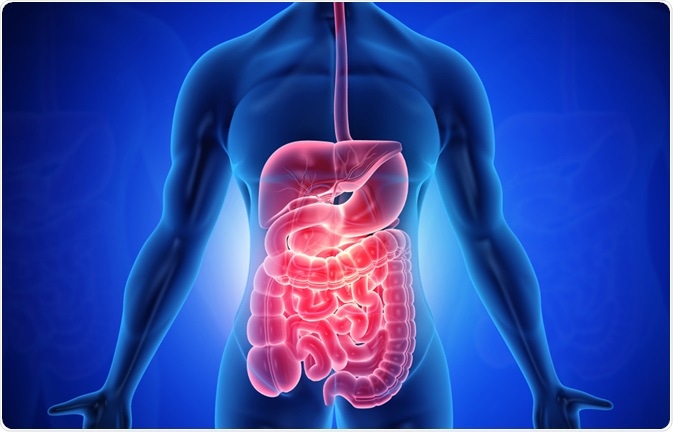In the earliest stages of the pandemic, the severe acute respiratory coronavirus 2 (SARS-CoV-2) virus was thought to cause diseases of the respiratory system, with the thin cells of the respiratory system providing an environment for the infection to spread among humans via the respiratory tract. Across the globe, populations were asked to remain vigilant of three classic symptoms: a fever, a new and continuous cough and shortness of breath
As the pandemic has continued, evidence that the infection can manifest in non-respiratory symptoms has grown. Currently, the Centres for Disease Control and Prevention (CDC) list eleven symptoms as indicative of COVID-19, including two gastrointestinal symptoms.
Interest in the impact of COVID-19 on the gastrointestinal system began to emerge in line with an increasing number of patients presenting with symptoms including nausea, diminished appetite and diarrhea. Early case reports demonstrated the presence of the virus in stool samples, suggestive of an additional route to transmission via the fecal-oral route.
 Image Credit: Explode / Shutterstock.com
Image Credit: Explode / Shutterstock.com
Biological mechanisms for SARS-CoV-2 and gastrointestinal symptoms
It is widely accepted that the COVID-19 causing virus can enter and infect host cells via angiotensin-converting enzyme 2 (ACE-2). ACE-2 is an enzyme involved in lowering blood pressure and inflammation and is found on the surface of many cell types. The spike protein of the SARS-CoV-2 virus binds with ACE-2 on the surface of the host cell, resulting in the endocytosis of the virus and enzyme into the cell. ACE-2 is highly expressed in the upper and lower gastrointestinal tract, providing a prerequisite for SARS-Cov-2 infection.
Prevalence of diarrhea in COVID-19
Diarrhea as a symptom of COVID-19 has significant consequences for public health. The potential for the virus to be transmitted via the fecal-oral route presents additional challenges for areas with poor sanitation. Current disinfection strategies such as chlorination may prove to be insufficient against the virus.
A systematic review of gastrointestinal symptoms in COVID-19 showed an overall prevalence of diarrhea between 5 – 10%, although rates varied extensively between studies. Larger cohort studies report prevalence rates between 20-30%.
Diarrhea may be underreported
Studies that look at the prevalence of diarrhea symptoms following SARS-CoV-2 infections have reported lower rates than those observed in other coronaviruses, with studies reporting diarrhea in up to 50% of patients with SARS and 75% of patients with MERS. However, researchers believe that the currently available data may underestimate the burden of COVID-19 related diarrhea. Few studies conducted to date have included a specific criterion for describing diarrhea, neither in terms of describing the number of evacuations per day nor consistency of stools.
Studies that describe COVID-19 symptomology have tended to focus on the most critically ill patients: those who are at risk of severe illness, long-term effects, or mortality. The impact of the virus on the respiratory or circulatory systems has taken precedence over the impact of the infection on the gastrointestinal system. Furthermore, as COVID-19 testing programs and public health information programs have largely focused on describing respiratory symptoms, it is plausible to suggest that there may be a cohort of undiagnosed patients with low severity illness but with digestive symptoms, such as diarrhea.
Prognostic implications of diarrhea in COVID-19
The correlations between diarrhea and symptom severity, and diarrhea and clinical outcomes in COVID-19 still require clarification. In some cases, studies have found that diarrhea is more prevalent in patients with severe COVID-19 compared to patients with mild or moderate disease. Similarly, the presence of COVID-19 with gastrointestinal symptoms has been shown to increase the risk of acute respiratory distress syndrome and mechanical ventilation, as compared with COVID-19 without gastrointestinal symptoms. Other studies, however, have not found such associations between the presence of diarrhea and the severity of COVID-19.
The research regarding whether gastrointestinal symptoms emerge prior to, or after respiratory symptoms is also mixed. In one study conducted in the United States, patients exclusively developed diarrhea after developing the classic COVID-19 of a cough, fever, and shortness of breath.
More recently, one study identified subgroups of COVID-19 patients: one group who developed respiratory symptoms only, one group who developed both respiratory and gastrointestinal symptoms, and a final, small sub-group who developed gastrointestinal symptoms only. Patients who presented with digestive symptoms had a longer course between symptom onset and viral clearance, indicating a possible higher viral burden. Critically, these patients also took longer to seek medical care. This, teamed with an absence of respiratory symptoms, could indicate a subset of patients who may be unintentionally spreading the virus.
Recommendations
Healthcare staff should recognize that new-onset diarrhea could be indicative of COVID-19 infection in the absence of classic respiratory symptoms. Patients should be encouraged to quarantine and seek medical advice, especially if they have recently been in contact with another infected individual. Preventative measures against the spread of the virus should also include consideration of the oral-fecal transmission route.
References
- D'Amico, F., Baumgart, D. C., Danese, S., & Peyrin-Biroulet, L. (2020). Diarrhea During COVID-19 Infection: Pathogenesis, Epidemiology, Prevention, and Management. Clinical gastroenterology and hepatology: the official clinical practice journal of the American Gastroenterological Association, 18(8), 1663–1672. https://doi.org/10.1016/j.cgh.2020.04.001
- Guan, W. J., Ni, Z. Y., Hu, Y. et al. (2020). Clinical Characteristics of Coronavirus Disease 2019 in China. The New England journal of medicine, 382(18), 1708–1720. https://doi.org/10.1056/NEJMoa2002032
- Han, C., Duan, C., Zhang, S., Spiegel, B., Shi, H., Wang, W., Zhang, L., Lin, R., Liu, J., Ding, Z., & Hou, X. (2020). Digestive Symptoms in COVID-19 Patients With Mild Disease Severity: Clinical Presentation, Stool Viral RNA Testing, and Outcomes. The American journal of gastroenterology, 115(6), 916–923. https://doi.org/10.14309/ajg.0000000000000664
- Jin, X., Lian, J. S., Hu, J. H., Gao, J., Zheng, L., Zhang, Y. M., Hao, S. R., Jia, H. Y., Cai, H., Zhang, X. L., Yu, G. D., Xu, K. J., Wang, X. Y., Gu, J. Q., Zhang, S. Y., Ye, C. Y., Jin, C. L., Lu, Y. F., Yu, X., Yu, X. P., … Yang, Y. (2020). Epidemiological, clinical and virological characteristics of 74 cases of coronavirus-infected disease 2019 (COVID-19) with gastrointestinal symptoms. Gut, 69(6), 1002–1009. https://doi.org/10.1136/gutjnl-2020-320926
- Yan, R., Zhang, Y., Li, Y., Xia, L., Guo, Y., & Zhou, Q. (2020). Structural basis for the recognition of SARS-CoV-2 by full-length human ACE2. Science (New York, N.Y.), 367(6485), 1444–1448. https://doi.org/10.1126/science.abb2762
Further Reading
- All Coronavirus Disease COVID-19 Content
- COVID-19 and Headache
- What Does COVID-19 do to the Lungs?
- Can Pets Get COVID-19?
- COVID-19 and Allergies
Last Updated: Feb 23, 2021

Written by
Clare Knight
Since graduating from the University of Cardiff, Wales with first-class honors in Applied Psychology (BSc) in 2004, Clare has gained more than 15 years of experience in conducting and disseminating social justice and applied healthcare research.
Source: Read Full Article
